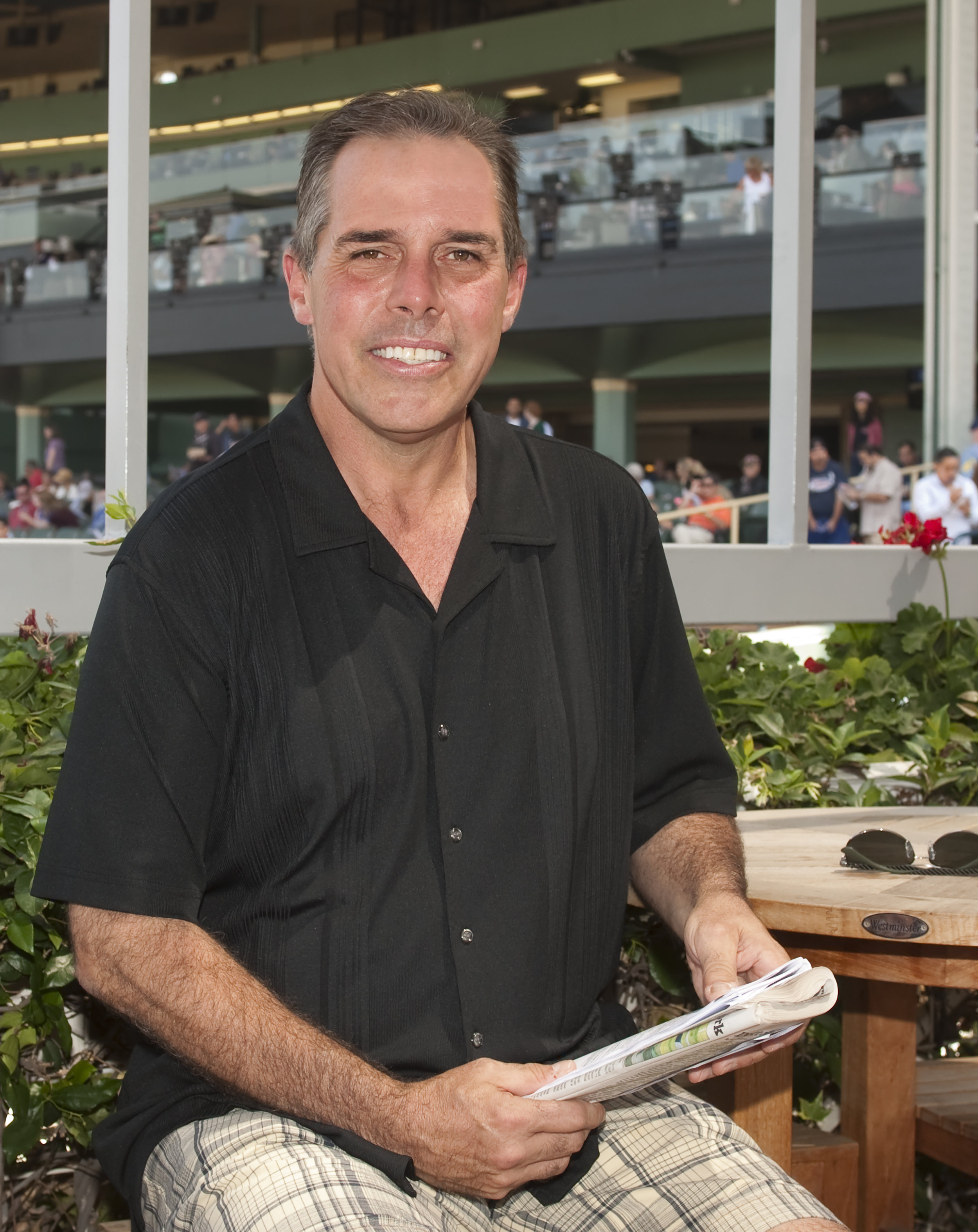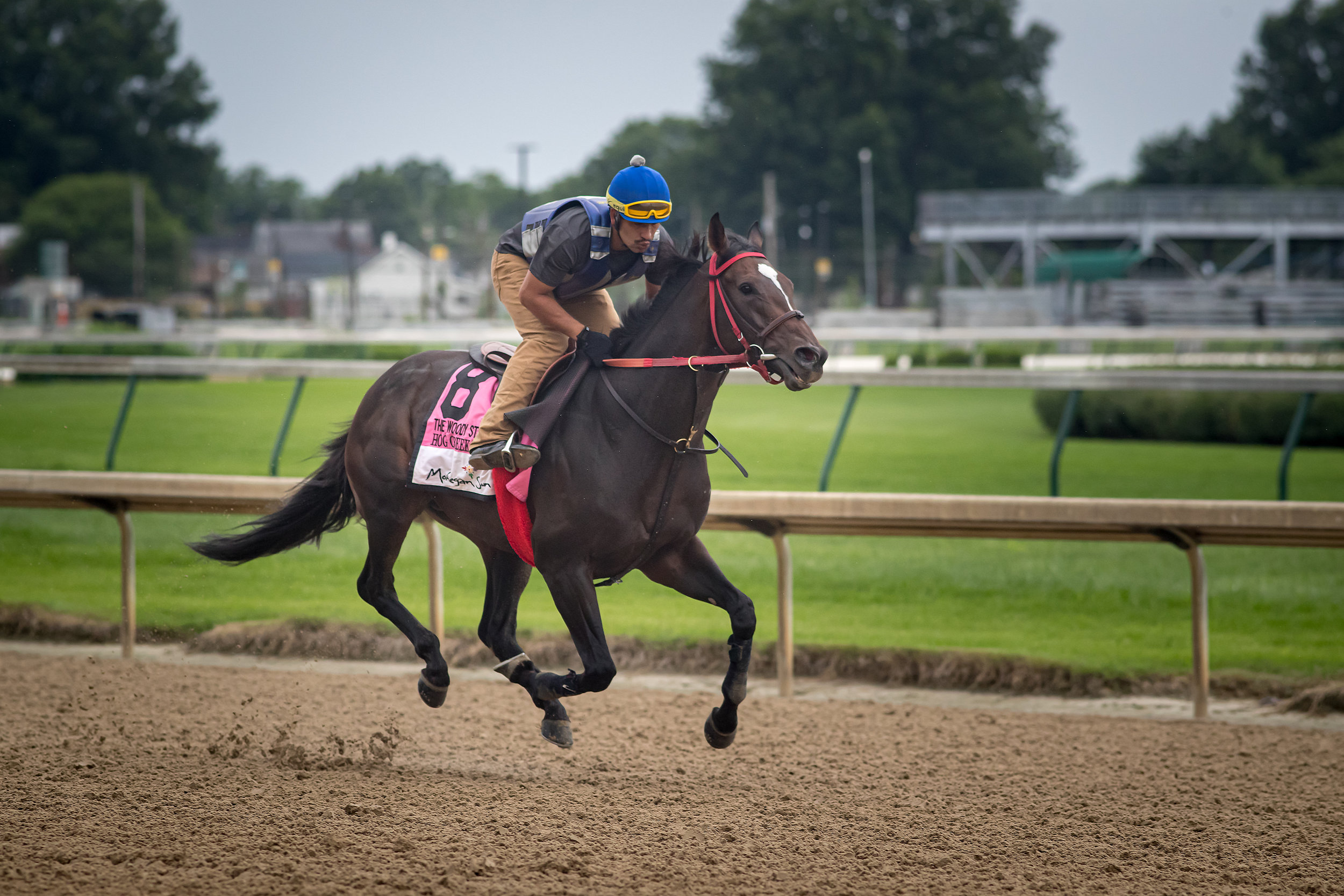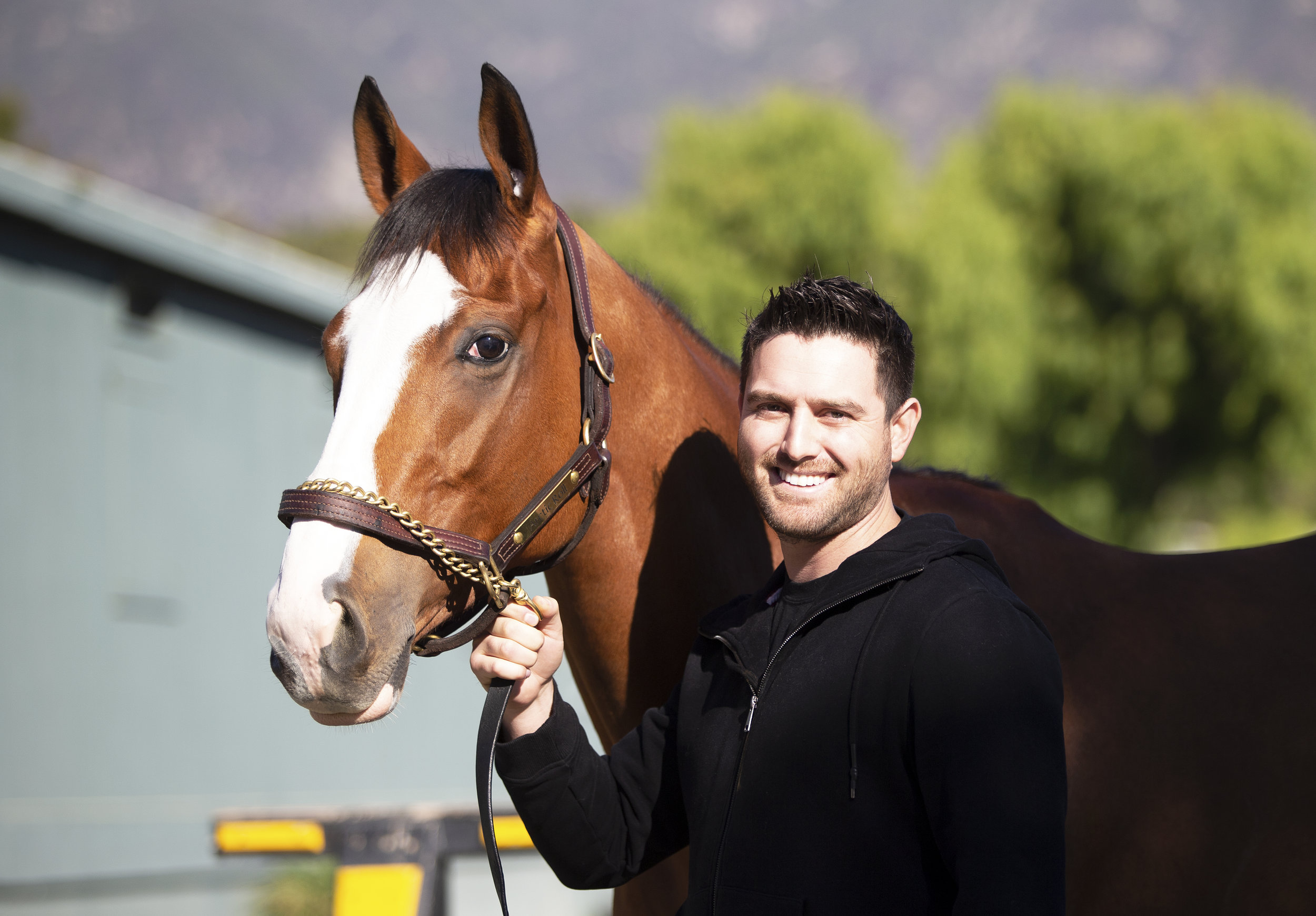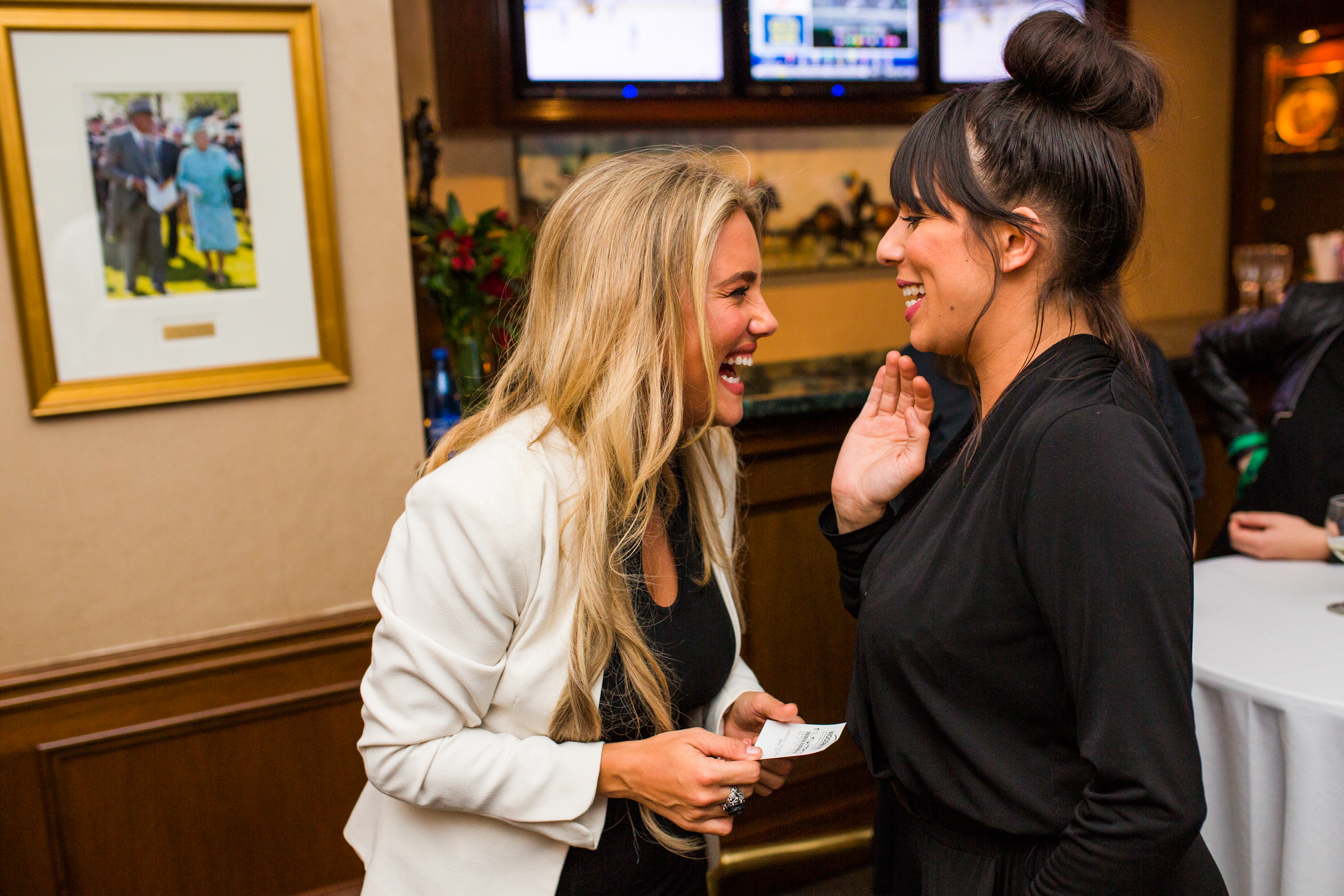Gary Young
/By Ed Golden
For a guy whose livelihood is based on calculations measured in milliseconds, Gary Young never seems to be in a hurry.
But he is a quick study with a quicker opinion, remindful of Woody Allen’s quip: “I took a course in speed reading and read War and Peace in 20 minutes.
“It’s about Russia.”
Gary Young’s life is about racing, and consummately longer than 20 minutes. It started when his parents took him to Arlington Park at the age of six, too young to realize it was chapter one of an engrossing biography.
Half a century later, Young is a respected fixture at the apex of his profession as a private clocker and bloodstock agent, providing information for a fee, winning the odd bet with his own dough, and earning sizeable chunks of change as a buyer or seller of young horses at the sales ring.
Sitting in an open box in the last row of the Club House on any given morning, Young has all the tools of a clocker’s trade at hand: binoculars, stop watch, pens, pencils, notepad, recording devices, the obligatory cell phone, snacks, liquid refreshment and other assorted paraphernalia.
He confirms for posterity the horses’ workouts into his recorder with the verbal rat-a-tat-tat of a polished auctioneer, not missing a beat.
His is a specialized sanctum. It has been thus for four decades now.
Born in Joliet, Ill., Gary grew up in nearby Lockport and got his first glimpse of major racing at Arlington Park in Arlington Heights, about 28 miles and a 30-minute ride from Chicago.
“My dad would take me to the paddock and point out certain things, like horses washing out,” Young said, recalling those halcyon days of yesteryear. “We saw horses like Damascus, Dr. Fager and Buckpasser run there. When I was 12 years old, Secretariat came to Arlington after he won the Triple Crown at Belmont in 1973.
“At that time, there was really big-time racing at Arlington Park. It started sliding later that decade, ironically after (owner) Marge Everett got caught bribing the governor to build a freeway from downtown Chicago to Arlington Park.”
It was there he linked his liaison with the Winick family—Arnold, Neal and Randy—Arnold being the most prominent of the trio in the Windy City area.
“Arnold was a really big trainer in Illinois,” Young said. “We’d see each other and I’d say hi to him. My parents (Cliff and Rachel) were weary of the Illinois winters and always talked about moving to Miami where Winick primarily was based.
“He told me if I ever came there to stop by and I could have a job. About 1978, we moved to Florida where I started at the bottom, walking hots and later grooming horses for Neal, who was trainer of the Winick stable there. Randy was training in California.
“As a groom, I became very aware that I was severely allergic to hay. The inside of my arms would burn like they were on fire if I filled up a hay net. Turned out, the Winicks always had someone who would go up in the grandstand and time horses, watch their horses work, watch other horses work, and make recommendations on ones to purchase or claim.
“Neal decided that because of my allergy, I couldn’t groom horses, so he bought me a stopwatch and sent me to the grandstand to time horses. It was in April of 1979 when I was 18. This past April marked 40 years I’ve been a clocker.”
During that span, Young has received testimonials from the game’s biggest players, among them Jerry Bailey and Todd Pletcher. Noted Bailey: “Gary Young has the unique ability to spot good horses at two-year-old-in-training sales after they come to the track to embark on their careers.
“Having watched him grow in racing from the bottom up, his foundation is rock solid and his eye for talent as good as any in the game.”
Added Pletcher: “Gary found Life at Ten for us. His record at auction speaks for itself. He commands respect in many aspects of the racing world.”
Young readily acknowledges he’s made more money buying and selling horses than betting on them, although his maiden triumph as a gambler remains fresh in his memory.
“The first horse I clocked and bet on that won was trained by Stan Hough, who was the dominant trainer in Florida at that time, along with Winick,” Young said. “It was the first horse that Hough bred, and it was named Lawson Isles. He paid $12 or $14.
“I thought to myself, ‘That’s pretty cool.’ Little did I know that I’d still be doing it 40 years down the road.
“I spent a couple years around Florida clocking, and in the fall of 1980, a horse came to our barn named Spence Bay that Arnold had purchased out of the Arc de Triomphe sale.
“He was the meanest horse you’d ever want to be around but also an unbelievable talent. He won a couple stakes in Florida like a really good horse, but Arnold always would cut back his stock there and around April, he sent some to California, including Spence Bay.
“California was California at that time, and I took the opportunity to come there with Spence Bay in April of 1981 and clock horses.
“I stopped working for the Winicks about 1983, but it was amicable, not bitter by any means. They were kind of downsizing a bit then anyway, and I basically went out on my own. I got my last steady paycheck around 1983, before I started clocking.
“Racing was really good in California at that time, and the Pick Six was very popular and appealing. I’d provide my information to Pick Six players for a percentage of the winnings, and I hit a lot of them in the 80s.”
Times have changed, however. “These days, I definitely make more money buying and selling horses than I do gambling,” Young said. “It’s not the same.”
TO READ MORE —
BUY THIS ISSUE IN PRINT OR DOWNLOAD -
SUMMER SALES 2019, ISSUE 53 (PRINT)
$6.95
SUMMER SALES 2019, ISSUE 53 (DIGITAL)
$3.99
WHY NOT SUBSCRIBE?
DON'T MISS OUT AND SUBSCRIBE TO RECEIVE THE NEXT FOUR ISSUES!
PRINT & ONLINE SUBSCRIPTION
From $24.95































